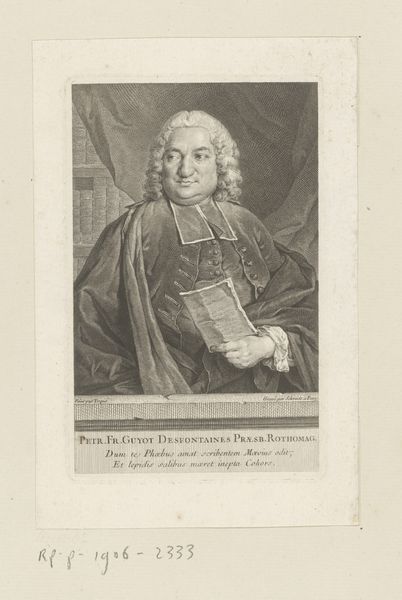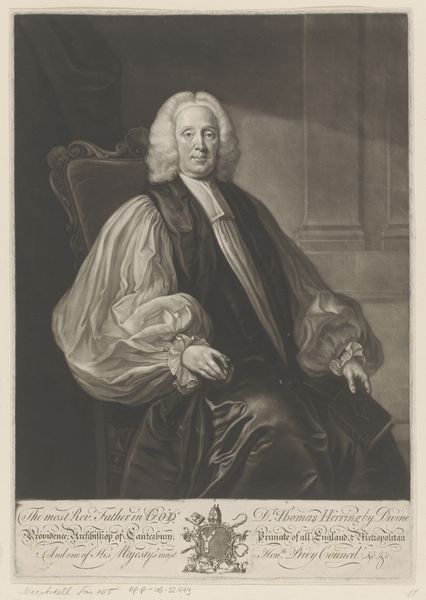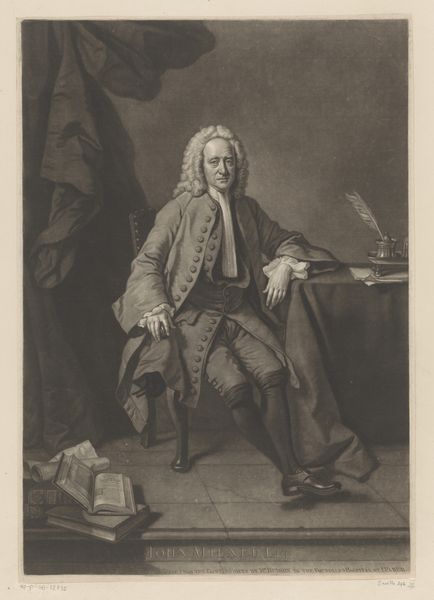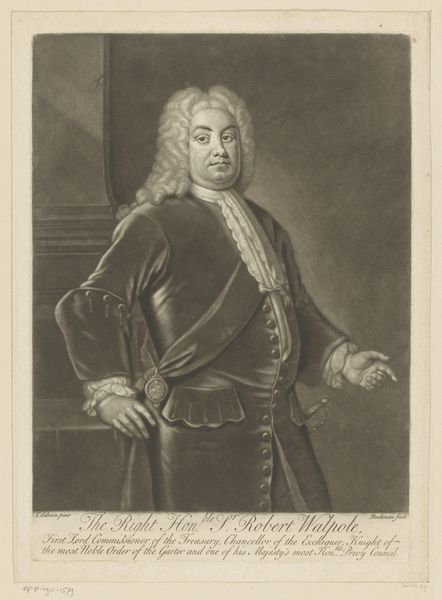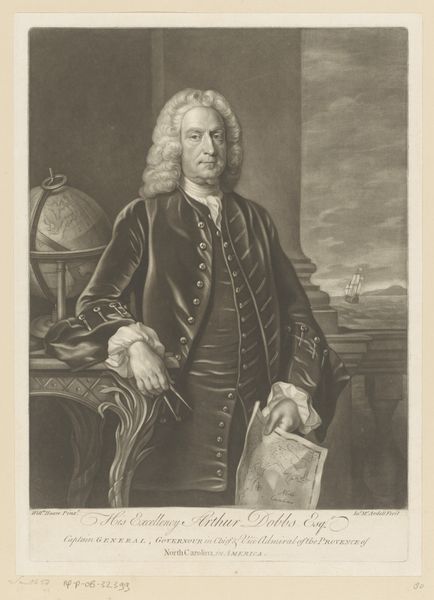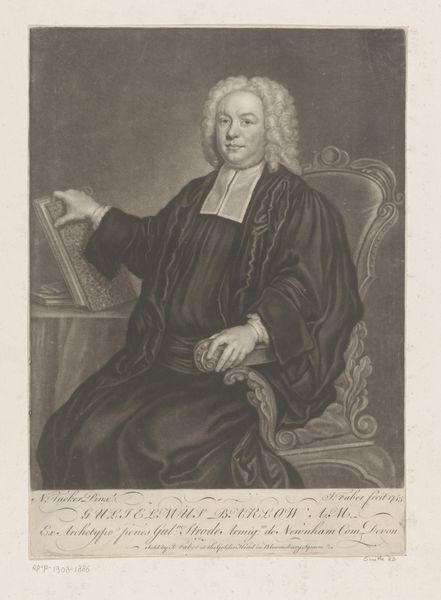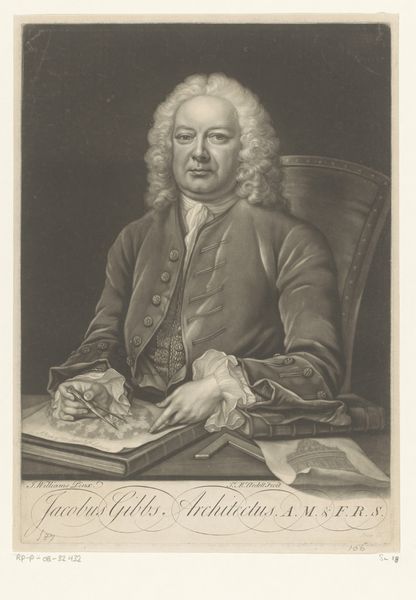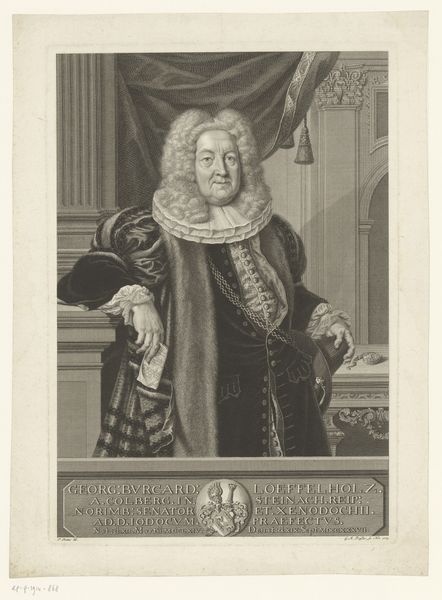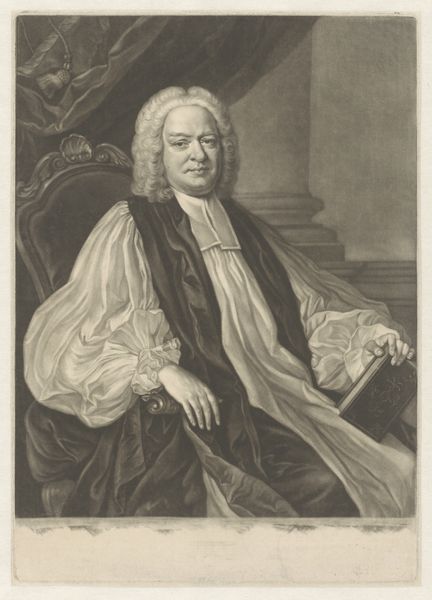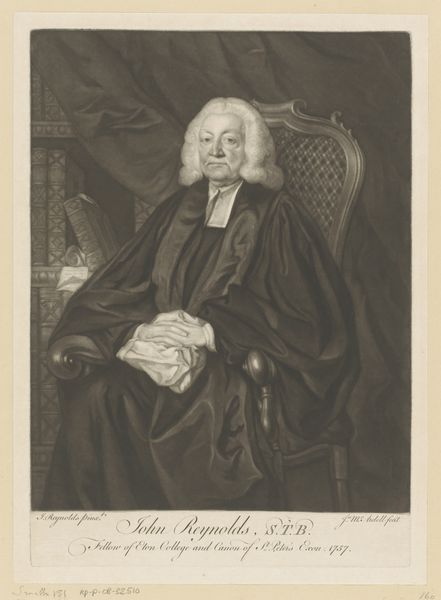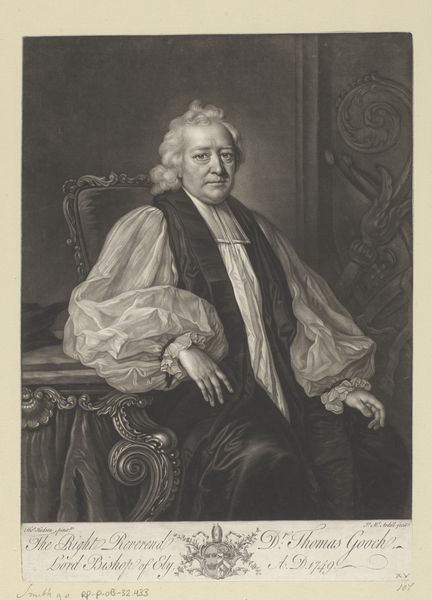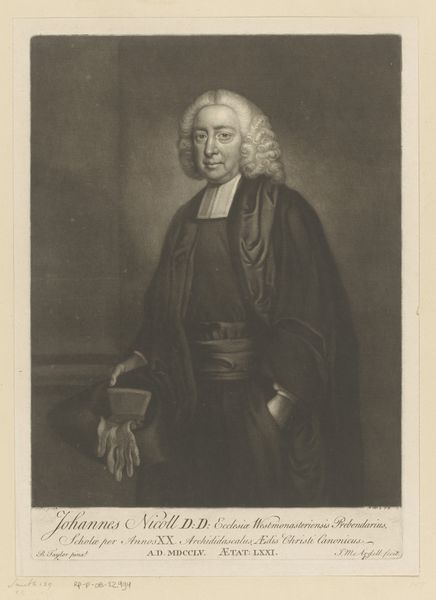
print, engraving
#
portrait
#
baroque
# print
#
historical photography
#
academic-art
#
engraving
Dimensions: height 351 mm, width 249 mm
Copyright: Rijks Museum: Open Domain
Curator: This is "Portret van Richard Osbaldeston," a print created by James McArdell between 1747 and 1762, now residing in the Rijksmuseum. Editor: The first thing that strikes me is the incredible detail rendered in this print. The soft, flowing lines of his wig contrast with the heavy folds of his robe—it's a study in textures, really. Curator: Absolutely. This piece captures Osbaldeston at a time when the Church of England held significant social and political sway. Notice how his attire signifies not just religious authority, but also reflects the socio-economic status afforded to high-ranking clergy. The portrait serves almost as propaganda, reinforcing societal hierarchies. Editor: It's fascinating how McArdell, working with engraving techniques, conveys such a sense of volume. Think about the labor invested here—each line meticulously placed. And consider the paper itself, the materials involved in both the creation and the potential mass distribution of this image. It speaks to a growing culture of accessibility, even to portraiture. Curator: I'm struck by the almost performative aspect of his pose. It is intentionally constructed. Osbaldeston is projecting an image of power and intellect. His gaze, his posture, all contribute to the narrative of the established, ruling elite. This print exists within the context of the enlightenment and emerging ideas about class and authority. Editor: The details matter, for sure. Even the paper quality plays a role. Was it widely distributed? How many impressions were made? Considering printmaking's social reach lets us see it less as a singular art object and more as an agent within a complex web of production, dissemination, and, potentially, social change. Curator: Indeed, while McArdell likely aimed to memorialize and perhaps ennoble Osbaldeston, our modern view allows us to question the systems of power and representation embedded within the piece. The work provides rich insight into gender and power dynamics in that era. Editor: Thinking about McArdell’s craftsmanship reminds us that even within seemingly straightforward portraiture, there is immense technical skill. Looking at the crosshatching, the gradations of tone… It makes us appreciate the value of specialized, often unacknowledged, labor involved in artmaking. Curator: Examining "Portret van Richard Osbaldeston" opens a discussion on identity, social stratification, and the nuanced ways power manifests within portraiture, providing vital commentary on 18th-century society and representation. Editor: Precisely, by centering on material reality and the process involved, we unveil the complex social relations that shape its meaning beyond a mere depiction. It offers insights into material production, networks of distribution, and their lasting impact on cultural representation.
Comments
No comments
Be the first to comment and join the conversation on the ultimate creative platform.
